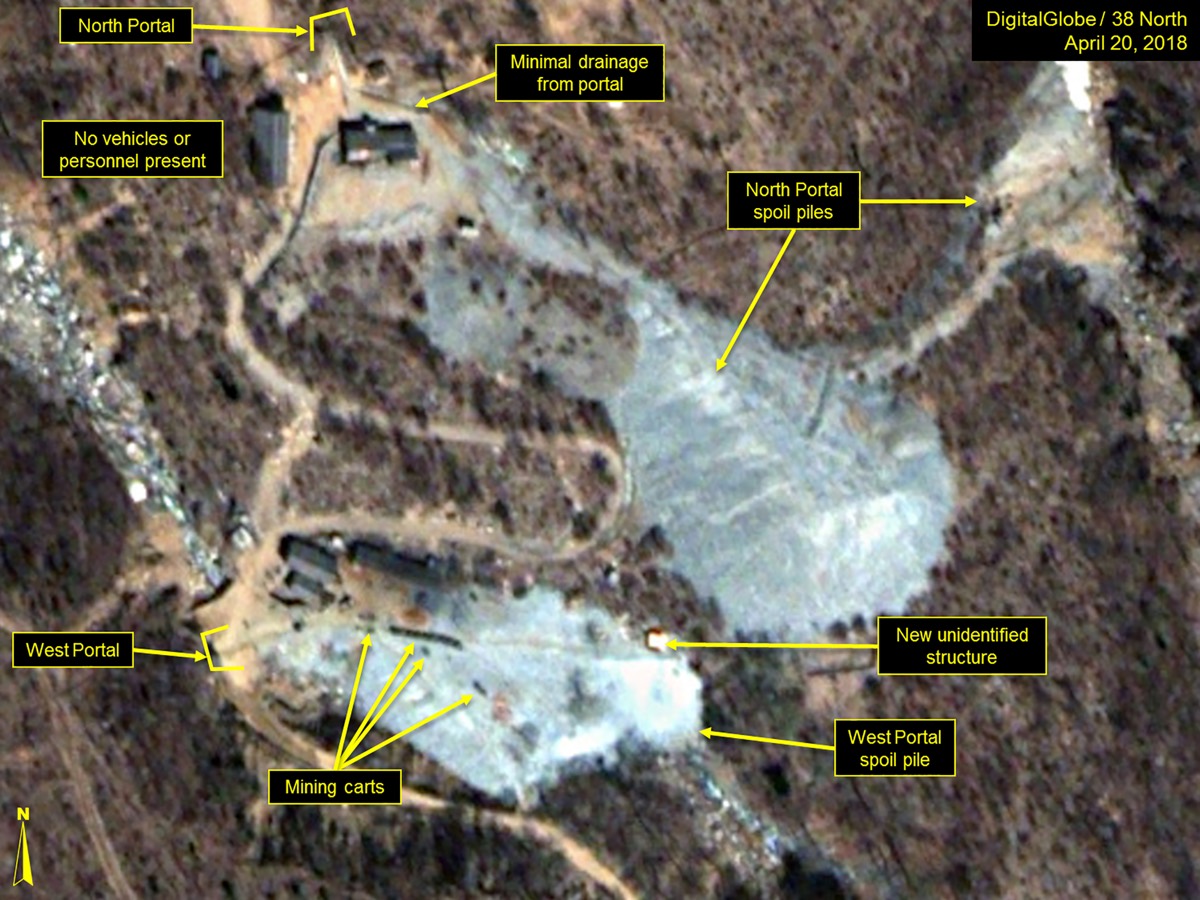Why Is North Korea Shutting Down Its Nuclear Test Site?

Last week, North Korea announced that it will cease all nuclear testing and will shut down its main testing facility at Mount Mantap. Although some believe the decision came because of easing tensions between the country and the world, others think Mount Mantap may have come down with a bad case of "tired mountain syndrome."
But what exactly is tired mountain syndrome, and how does a mountain "catch" it?
It turns out that repeated nuclear blasts can weaken the rock around underground nuclear test sites, eventually making them unsafe or unusable — which might have happened with North Korea's preferred testing grounds. [North Korea: A Hermit Country from Above (Photos)]
Powerful explosions
The hermit country's latest nuclear test, conducted in September 2017 at Punggye-ri, was at least 17 times more powerful than the bomb that was dropped on Hiroshima, Japan, in 1945, according to The Washington Post.
In fact, the explosion registered as a magnitude-6.3 earthquake, and before-and-after satellite shots showed visible movement at Mount Mantap — a 7,200-foot-high (2,200 meters) mountain under which deeply buried tunnels house most of the tests. Some geologists think that the mountain is cracking under the pressure.
"You can take a piece of rock and set it on the ground, take a hammer, tap it; nothing will happen," said Dale Anderson, a seismologist at Los Alamos National Laboratory. You keep tapping it — and, say — the 21st time, "it will break and crack open."
When a nuclear explosion goes off inside a mountain, it breaks the surrounding rock, and the energy propagates out like a wave (imagine throwing a pebble into a lake). But as more explosions go off around the same — but not exact — spot, rocks that are farther away also begin to crumble under repeated stress.
Sign up for the Live Science daily newsletter now
Get the world’s most fascinating discoveries delivered straight to your inbox.
"The accumulated effect of these explosions that weaken rocks and create that fracturing [farther away from the point of explosion] is what we call tired mountain syndrome," Anderson told Live Science.
Tired mountain syndrome can also stymie scientists trying to measure how strong an explosion is, he said. The propagating energy scatters around these fractured rocks before reaching the sensors, so the explosion registers as a lot weaker than it actually is, he added.
But this effect "has nothing to do with being able to use the facility," Anderson said.
In fact, a country can keep using the site but must adjust the mathematical equations it uses so that the final magnitude of the explosion takes tired mountain syndrome into account.
Toxic seepage
If nuclear test sites are shut down, Anderson said, it's usually a direct consequence of the syndrome. Mountains with this condition become much more permeable, meaning that more pathways open up for gas and liquid to travel through the rock. This means there's a greater chance for radioactive gas — with the most concerning being xenon — to escape the rock and seep out to the surface, Anderson said.
"Mother nature has already fractured the rock," Anderson said. "When an explosion goes off, sometimes damage [from it] will connect with natural fractures, and you can conceivably get a pathway up to the surface, and gases will seep out."
The process by which gas could be pulled up and through the rock is called barometric pumping.
A group of Chinese geologists said on Wednesday (April 25) that they believe the nuclear test site had collapsed and that Mount Mantap was in "fragile fragments," according to The Washington Post. But William Leith, the senior science adviser for earthquake and geologic hazards at the U.S. Geological Survey — who with one other scientist coined the term to describe a Soviet nuclear testing site in 2001— doesn't think it is.
In an interview with CBC Radio in October, when asked if the mountain in North Korea was tired, he said, "I would say, 'not very tired.' And that's because they've only had, as far as we know, six underground nuclear explosions, and there's a lot of mountain left there."
In comparison, he and his colleagues first used the term to describe Degelen Mountain in the former Soviet Union (now Kazakhstan), which was battered by more than 200 explosions.
North Korea's mountain may be tired — but whether it's completely exhausted is difficult to say.
Originally published on Live Science.

Yasemin is a staff writer at Live Science, covering health, neuroscience and biology. Her work has appeared in Scientific American, Science and the San Jose Mercury News. She has a bachelor's degree in biomedical engineering from the University of Connecticut and a graduate certificate in science communication from the University of California, Santa Cruz.









